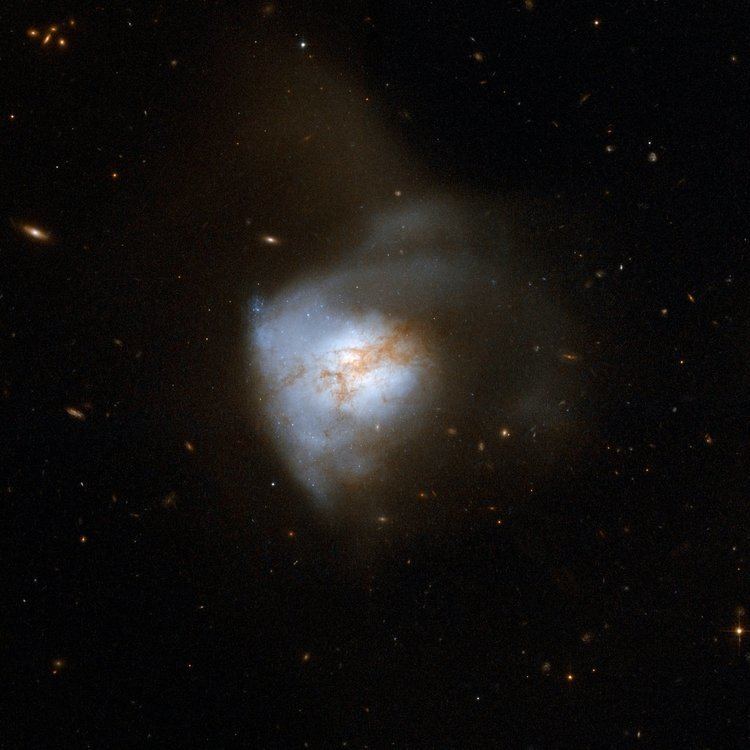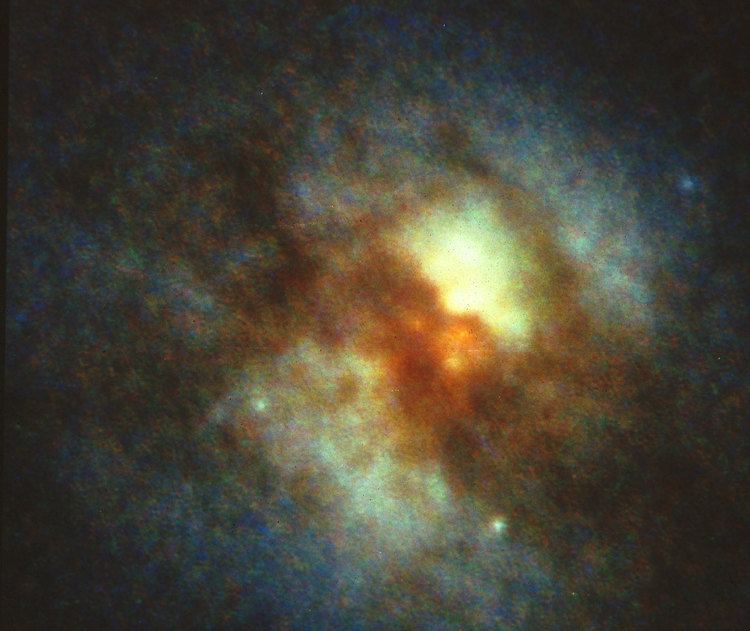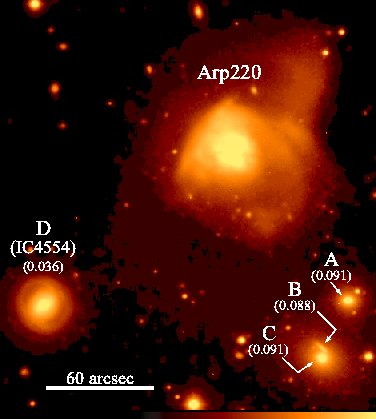Right ascension 15 34 57.1 Redshift 5434 ± 7 km/s Apparent size (V) 1′.5 x 1′.2 | Declination +23° 30′ 11″ Type S? Magnitude 13.9 Apparent magnitude (V) 13.9 | |
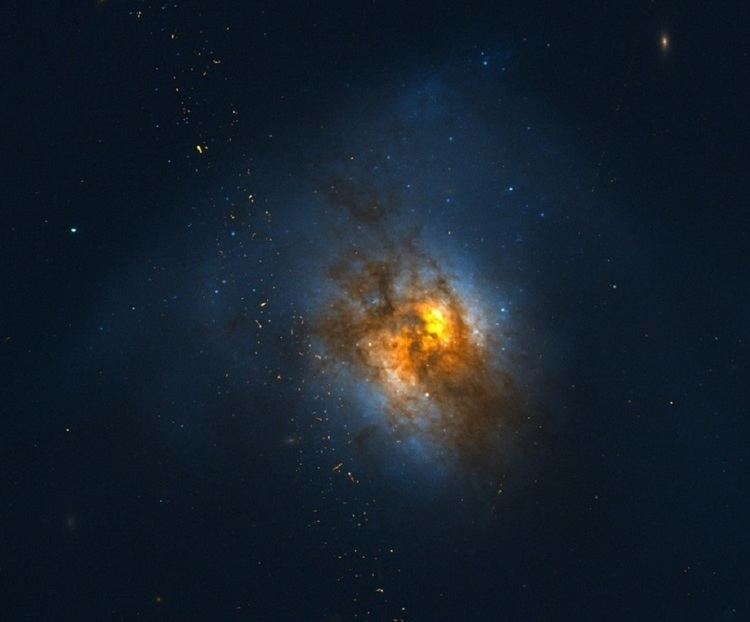 | ||
Similar Starburst galaxy, NGC 6240, Markarian 231, Arp 299, Messier 82 | ||
Collapsing galaxy arp 220
Arp 220 is the result of a collision between two galaxies which are now in the process of merging. It is the 220th object in Halton Arp's Atlas of Peculiar Galaxies.
Contents
- Collapsing galaxy arp 220
- galaxias en interacci n el caso de arp 220 loreto barcos univ de virginia
- Features
- References
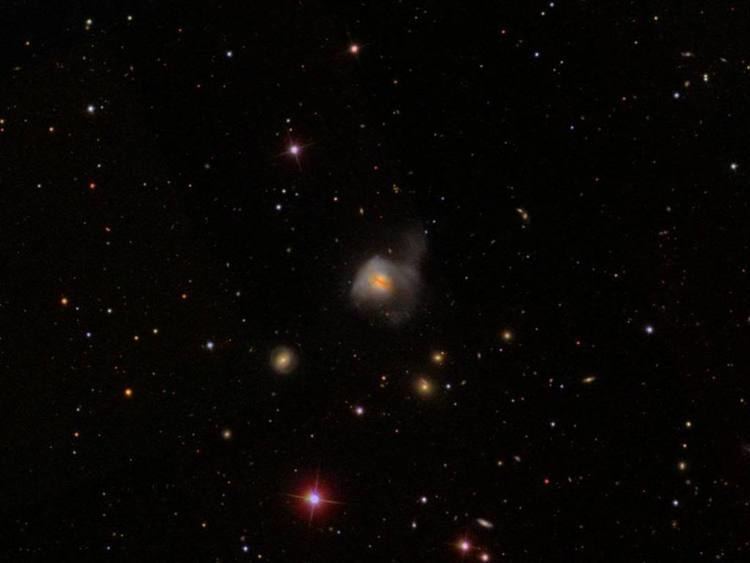
galaxias en interacci n el caso de arp 220 loreto barcos univ de virginia
Features
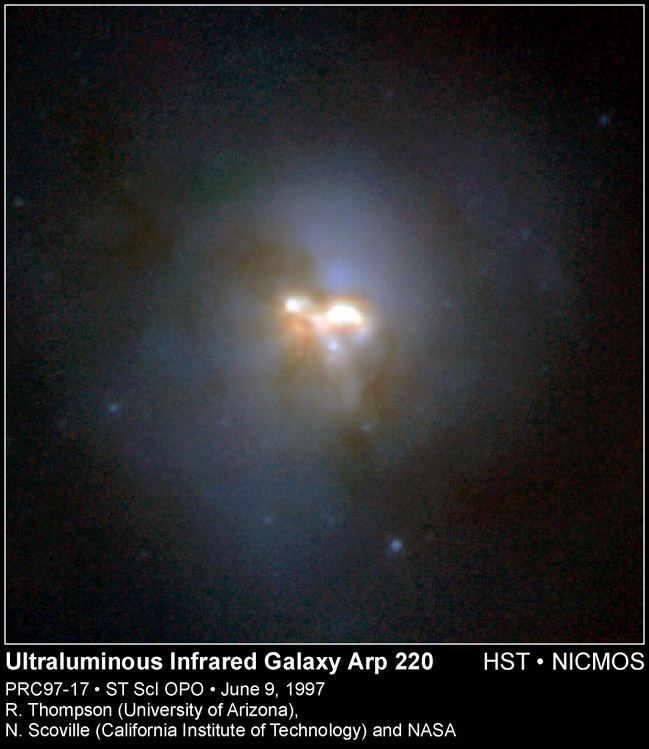
Arp 220 is the closest Ultraluminous Infrared Galaxy (ULIRG) to Earth. Its energy output was discovered by IRAS to be dominated by the far-infrared part of the spectrum. It is often regarded as the prototypical ULIRG and has been the subject of much study as a result. Most of its energy output is thought to be the result of a massive burst of star formation, or starburst, probably triggered by the merging of two smaller galaxies. Recent (2002 and 1997) HST observations of Arp 220, taken in visible light with the ACS, and in infrared light with NICMOS, revealed more than 200 huge star clusters in the central part of the galaxy. The most massive of these clusters contains enough material to equal about 10 million suns. X-ray observations by the Chandra and XMM-Newton satellites have shown that Arp 220 probably includes an active galactic nucleus (AGN) at its core, which raises interesting questions about the link between galaxy mergers and AGN, since it is believed that galactic mergers often trigger starbursts, and may also give rise to the supermassive black holes that appear to power AGN.

Luminous far-infrared objects like Arp 220 have been found in surprisingly large numbers by sky surveys of submillimetre wavelengths using instruments such as the Submillimetre Common-User Bolometer Array (SCUBA) at the James Clerk Maxwell Telescope (JCMT). Arp 220 and other relatively local ULIRGs are being studied as equivalents of this kind of object.
Astronomers from the Arecibo Observatory have detected organic molecules in the galaxy.
Arp 220 contains at least two bright maser sources, an OH megamaser, and a water maser.
In October 2011, astronomers spotted a record-breaking seven supernova all found at the same time in Arp 220.
